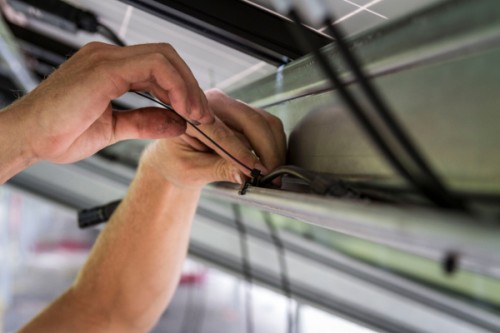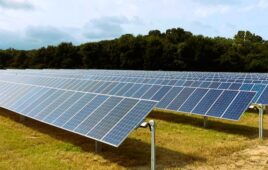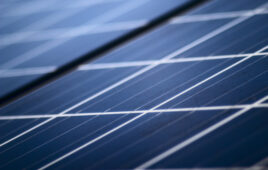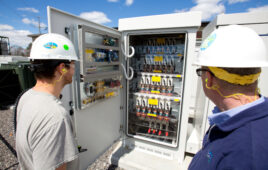Many plastic-molded products, like cable ties for solar projects, are “UV-rated,” but there is a wide interpretation of what that means. Cable ties come in different lengths, colors, widths and materials, but the “UV-rated” baseline for solar industry cable ties usually means they’re black. Cable tie resin is “natural” colored until a colorant, typically carbon black, is introduced into the manufacturing process. Carbon black is a major contributor to UV resistance of ties, and their longevity in the sun is dependent on the amount of carbon black used. So while using black cable ties for solar is the right way to go, the amount of carbon black really determines the ties’ lifespan.
 With a lack of standards as to what “UV-rated” means, a tie could have as little as 0.03% carbon black and still make that claim. There have been many studies, originating with Bell Labs in the 1950s, that show around 2% carbon black as the optimum amount for extended life expectancies in outdoor wire applications. In addition to the amount of carbon black, smaller particle sizes and good particle distribution within the molded part also play a role.
With a lack of standards as to what “UV-rated” means, a tie could have as little as 0.03% carbon black and still make that claim. There have been many studies, originating with Bell Labs in the 1950s, that show around 2% carbon black as the optimum amount for extended life expectancies in outdoor wire applications. In addition to the amount of carbon black, smaller particle sizes and good particle distribution within the molded part also play a role.
Carbon black is considered a UV absorber because it takes the high-energy UV rays and converts them into heat before they can damage the polymer resin. UV resistance of molded plastics can be further improved with UV inhibitors. For example, HellermannTyton’s line of solar ties includes a UV inhibitor in addition to the 2% carbon black, which helps to further improve lifespans.
Industry testing for UV weathering should be standardized. An out-of-the-big-box cable tie could be “UV-rated” and UL listed, but this does not mean a long life in the field. The long-term impacts of these decisions can be drastic. Cables droop, rub and sway in the wind, which can lead to a wide variety of faults, production losses and thousands of dollars in unexpected O&M costs.
HellermannTyton uses a UV resistant adhesive, followed by base materials that are designed for long-term outdoor use. Any inks are pigment-based and designed for long-term outdoor durability. Where applicable, colors are either extruded into the material or laminated with thermal transfer printable films, designed for use with specialized ribbon inks that are carbon-based for extreme UV environments. HellermannTyton tests the materials both in actual outdoor use and in accelerated aging chambers to verify and document results. Each label construction is unique and designed for the environment involved.
Not all UV-rated products are created equal. To ensure long-term durability in wire management and identification, search out high quality, well made and intensely tested products.
This tip was contributed by Nick Korth, product marketing manager of the energies division for HellermannTyton.




What is the expected service life of a UV stabilized cable tie in a commercial rooftop solar application in Pheonix Arizona? How often should O&M providers inspect and replace them if needed?
It’s UV and plasticizer out-gassing that degrade all so-called UV barriered ties. I’ve installed thousands of these and haven’t found any that endure past 18 months of sun.
Collin, I’m doing a bit of background research on this topic.
Would you be willing to contact me at gtrobinson@lbl.gov?
I do not think that the main failure mechanism of cable ties in PV applications is due to UV exposure since many of the ties are installed on the backplane where they are in the shade most of the time, as shown by the photo used in this article. There is some minimal UV exposure on the backplane due to reflectivity but the real culprit is salt, specifically ZnCl2 resulting from the corrosion of the galvanized steel frames. The zinc chloride acts as a stress cracking agent for many nylon cable ties. This problem is well understood and studied for almost 50 years and is recognized in other industries which limit the use of nylon to specific applications.
We produce a cable tie made from 100% PVDF that contains zero carbon black or stabilizers and has excellent long-term performance in continuous UV and salt exposure.
You may be right about very little UV exposure, but my domestic PV installation has no galvanized parts anywhere, and no chloride. My ties have cracked and fallen off after 7 years, with at most 5 minutes per day direct sun exposure in the very late afternoon, I wonder if the high temperature is a contributing factor.